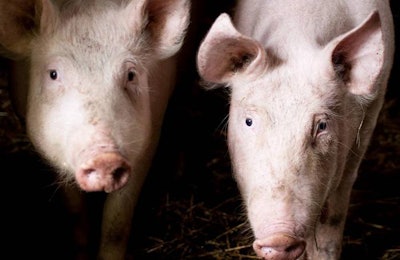
Researchers in Australia, Malaysia and India will be led by the UK’s Pirbright Institute, which has received a grant to develop a safe, effective and inexpensive vaccine for pigs against the Nipah virus. The award–worth over GBP2.3 million (US$3.0 million)-was given by Innovate UK, an innovation agency sponsored by the country’s government.
Causing severe symptoms and fatalities in pigs, humans and other animals, Nipah virus is known to be present in South and Southeast Asia.
“The region at risk of Nipah virus has some of the highest pig population densities found anywhere in the world, which are rising fast due to the demand of a growing human population,” said Simon Graham, PhD, a scientific leader at the Pirbright Institute. “This increases the risk of Nipah virus transmission to pigs and humans, which is why this work to generate effective vaccines is currently so important.”
As a first step, the research will focus on developing a vaccine that offers an alternative to the culling of pigs when outbreaks of the disease occur, which has adverse economic and animal welfare consequences, as well as posing a risk to public health. It is hoped that the work will ultimately improve public health directly through the development of a vaccine to protect pig farmers and other people from Nipah virus.
Nipah virus threat
Fruit bats and flying foxes are the most common hosts of Nipah virus, but the infection can spread to other species, including pigs and humans.
According to Centers for Disease Control and Prevention (CDC), Nipah virus was first identified in 1999 following an outbreak of encephalitis and respiratory symptoms in people who had contact with pigs in Malaysia and Singapore. The virus was named after a Sungai Nipah, a Malaysian village with a number of early victims.
While the signs were mild in pigs, almost 300 cases were confirmed in humans, more than 100 people died of conditions related to encephalitis. After an incubation period of five to 14 days, patients suffered fever and headaches, followed in some cases by respiratory and/or circulatory problems, coma and death. There were long-term health consequences in some cases that lasted for or recurred for years after the original infection.
Following the 1999 outbreak, more than one million pigs were destroyed in Malaysia, which hit the country’s pork sector hard as it also halted exports. Since then, pig farms have only been permitted in selected areas, but there have been no further cases.
A different strain of the Nipah virus was found to be responsible for an outbreak of the disease in people in Bangladesh in 2001, and according to CDC, there are new cases almost annually.
Nipah virus was also detected following a series of cases linked to a hospital in Siliguri in India in the same year.

















